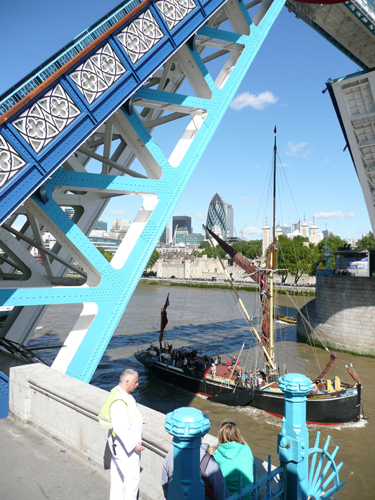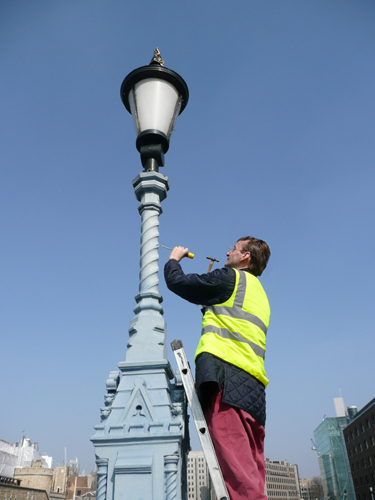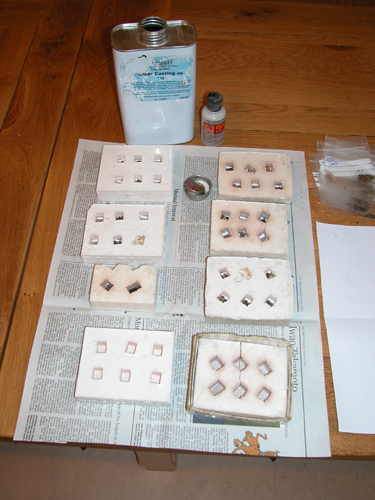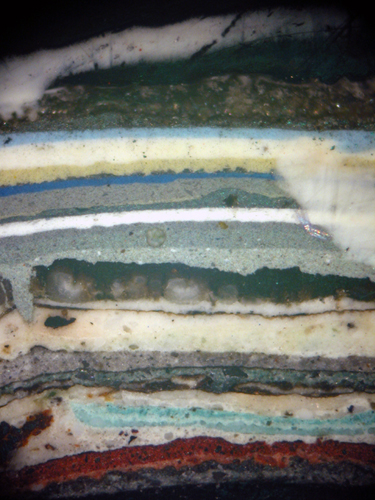
Tower Bridge is one of the most famous bridges in the world and one of London’s most recognisable landmarks.
As part of the recent £4million programme to revitalise the bridge Papers and Paints were asked to investigate the earlier colour schemes that had been employed.
The bridge was designed by Sir Horace Jones, in collaboration with (Sir) John Wolfe-Barry, and opened on 30th June 1894 by the Prince of Wales, the future King Edward VII.
Tower Bridge is a combined bascule and suspension bridge, its name is taken from its proximity to the Tower of London.

Some Facts
It is 60 metres long and has towers that rise to a height of 43 metres. Its middle section can be raised to permit large vessels to pass under it. Massive engines raise the bridge sections, which weigh about 1000 tonnes each, in just over a minute.
The bridge used to be raised about 50 times a day, but nowadays it is only raised about 2 or 3 times.
It is a busy and vital crossing of the River Thames and is crossed by over 40,000 people (motorists and pedestrians) every day.

The recent repainting and cleaning of the stonework was scheduled to take three years. During that time:
1,500 tonnes of expendable abrasive were used to blast all the existing paint off in order to expose the metal framework for repainting;
22,000 litres of a revolutionary new paint were applied to the bridge;
The new paint should last for 25 years with a top-up every 12 years;
It was decided that this time the bridge would be painted blue and white as it has been since The Queen’s Silver Jubilee in 1977.

Paint Analysis
Patrick and Fred Baty, of Papers and Paints, took sixty samples of paint from different elements of the bridge. Four hours later we left with a small plastic envelope full of precious fragments.

A small hammer, a 1″ chisel and a roll of 1″ masking tape are essential when sampling metalwork. The secret is to apply a strip of tape over the area to be sampled; to place the point of the chisel in the centre of the tape and to hit it sharply and at an acute angle. The idea is that a scab of paint pops off cleanly and is retained by the tape. A quick visual check will tell you if all the layers have been removed to the bright metal. The sample is then placed in a numbered bag and the location recorded.

The next process involves the setting of the samples in small blocks of clear resin. These are numbered; sawn in half and then polished with a progressively finer collection of abrasive cloths. The end result is a tiny piece of embedded paint that can be examined under the microscope.
An idea of what I found can be seen here.

See this film clip showing the bridge being painted.
View Larger Map












No comments yet. Be the first!